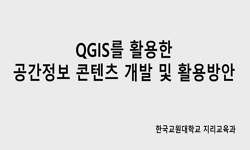In accordance with low carbon and green growth paradigm, a subway is one of major public transit systems for resolving traffic congestion and decreasing traffic accidents. In addition, as subway networks expand, passengers' travel pattern in the subwa...
http://chineseinput.net/에서 pinyin(병음)방식으로 중국어를 변환할 수 있습니다.
변환된 중국어를 복사하여 사용하시면 됩니다.
- 中文 을 입력하시려면 zhongwen을 입력하시고 space를누르시면됩니다.
- 北京 을 입력하시려면 beijing을 입력하시고 space를 누르시면 됩니다.
도시 철도개통에 따른 대중교통이용 편익측정을 위한 대안적 평가모델 : 지하철 9호선을 사례로 = An Alternative Evaluation Model for Benefit Measurement of Public Transportation by the Open of Urban Railway: Seoul Metro Line 9
한글로보기https://www.riss.kr/link?id=A105741883
- 저자
- 발행기관
- 학술지명
- 권호사항
-
발행연도
2011
-
작성언어
Korean
- 주제어
-
등재정보
등재
-
자료형태
학술저널
- 발행기관 URL
-
수록면
11-20(10쪽)
- 제공처
-
0
상세조회 -
0
다운로드
부가정보
다국어 초록 (Multilingual Abstract)
In accordance with low carbon and green growth paradigm, a subway is one of major public transit systems for resolving traffic congestion and decreasing traffic accidents. In addition, as subway networks expand, passengers' travel pattern in the subway network change and consequently affect the urban structure. Generally, new subway route has been planned and developed, mainly considering a travel demand forecast. However, it is desired to conduct an empirical analysis on the forecast model regarding change of travel accessibility and passenger demand pattern according to new subway line. Therefore, in this paper, an alternative method, developed based upon a spatial syntax model, is proposed for evaluating new subway route in terms of passenger's mobility and network accessibility. In a case study, we constructed subway network data, mainly targeting the no 9 subway line opened in 2009. With an axial-map analysis, we calculated spatial characteristics to describe topological movement interface. We then analyzed actual modal shift and change on demand of passengers through the number of subway passenger between subway stations and the number of passenger according to comparative bus line from Smart Card to validate suggested methods. Results show that the proposed method provides quantitative means of visualizing passenger flow in subway route planning and of analyzing the time-space characteristics of network. Also, it is expected that the proposed method can be utilized for predicting a passengers' pattern and its impact on public transportation.
동일학술지(권/호) 다른 논문
-
A Study on Relationships between Environmental Risk and Demographic Characteristics Using GIS
- Korea Spatial Information Society
- 황성남
- 2011
- 등재
-
저고도 무인 항공기 기반의 근접 실시간 공중 모니터링 시스템 구축
- 대한공간정보학회
- 최경아
- 2011
- 등재
-
- 대한공간정보학회
- 김재명
- 2011
- 등재
-
SQMR-tree: 대용량 공간 데이타를 위한 효율적인 하이브리드 인덱스 구조
- 대한공간정보학회
- 신인수
- 2011
- 등재




 ScienceON
ScienceON DBpia
DBpia





